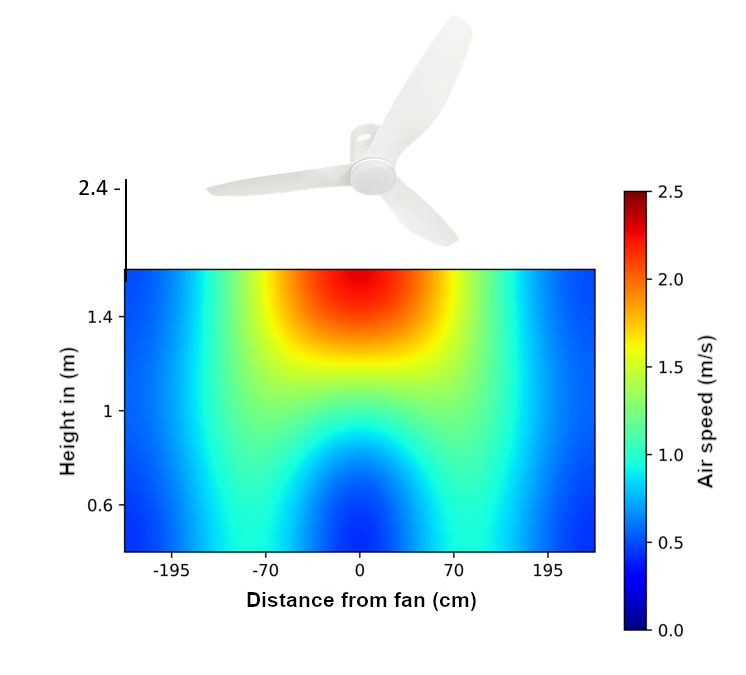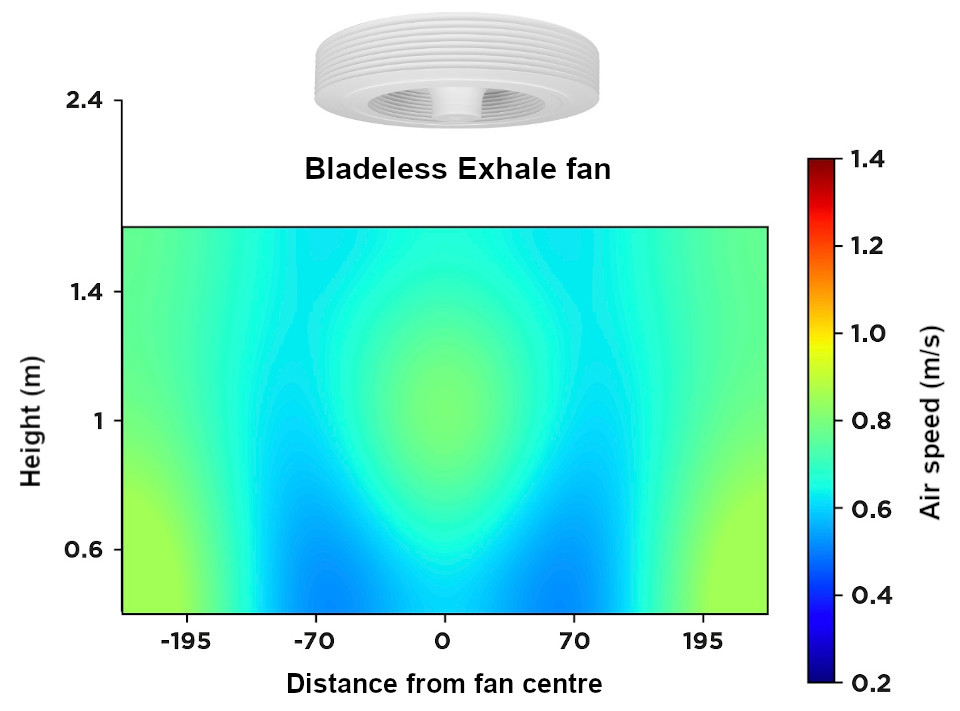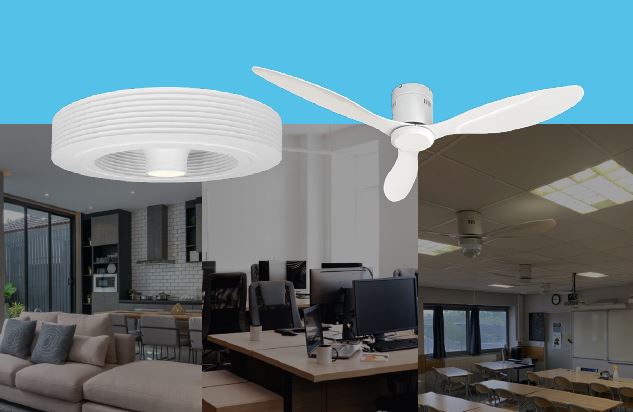The guide contains the basics for professionals concerned with ceiling fans. Based on the state of knowledge to date, this document is intended to be kept up to date with new studies, publications and feedback. (The guide is currently available in French).
- Safety rules
- Minimum blade height, additional safety for fans without blades
- Summer use, winter usel
- Air velocity, destratification of ambient air
- Zone of influence
- Impact zone, homogeneity of air speeds
- Coupling air mixers with passive or active summer comfort solutions
- Energy savings with air conditioning, harmonised air flows, heat and cold distribution
- Relationship between air speed and thermal comfort
- Synthetic and detailed approaches to equivalent cooling and comfort zones, taking humidity into account, analysis of the Givoni diagram
- Impact of furniture on air flows
- Positioning furniture, screens, etc.
- Regulatory constraints
- RE2020 context, degree-hours
- Desirable noise level for ceiling fans
- Sound comfort for the fan to be considered silent (decibels)
- Brushless DC motors or AC motors
- Characteristics of the various DC and AC motors
- Density of fans by type of premises
- Housing (single-family homes, flats), offices, educational premises, high-rise professional premises
- Layout rules for air heaters
- Distance between fans, distance from walls, strobe effect of lighting
- 3D thermal comfort simulations
- dynamic thermal simulation and digital flow mechanics (CFD)
- Environmental labels
- NF Habitat HQE, Sustainable Building Initiative
- Energy savings
- Savings in kWh linked to perceived temperature, savings linked to temperature setpoint adjustment, savings on cathedral ceilings
- Installation and maintenance
- Tutorials and videos on assembly, mounting systems and remote control pairing
Extracts from the guide
What is the area of influence of ceiling fans?

Blade ceiling fans
They are very effective vertically over the blades, but their area of impact is limited. Care should therefore be taken to select large blade diameters, above 1.30 m, and avoid, for example, diameters that are too small (90 cm or less, as their area of influence is very limited).
For example, for a standard fan with a diameter of 1.32 m, the area of influence on the ground is estimated at 10 m2.
It should also be noted that they are rarely used at maximum speed, as speeds in excess of 0.8 m/s are often uncomfortable.
Blade-less ceiling fans
Their air velocity is moderate, but spread over a wider area of impact.
They are therefore particularly suitable for creating uniform air speeds or for destratifying ambient air.
In working environments, they also provide greater comfort: leaves and hair don’t fly around.

Coupling ceiling fans with passive or active solutions?
A beneficial combination in all seasons.
In summer, combining ceiling fans with passive solutions (adiabatic cooling, etc.) or active solutions (air conditioning) offers a number of advantages:
- Homogenisation of air temperatures throughout the rooms concerned (destratification),
- Neutralisation of directional flows of cold air (air conditioning). In air conditioning, circulation rates (the ratio of air flow to room volume) are a maximum of 5 vol/h, whereas a ceiling fan will generally have a circulation rate of over 100 vol/h at maximum speed, which is 20 times more efficient. This breaks up the jets of cold air and distributes them more evenly across the room.
- Energy savings in summer (higher air-conditioning set points) and winter (better heat distribution means lower heating set points).


